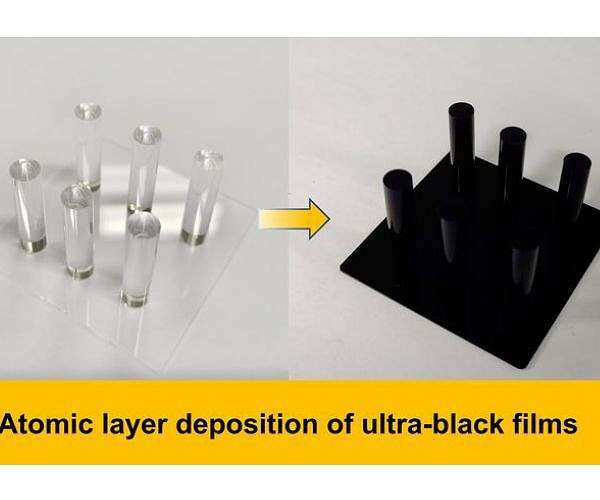19.03.2024

The team's ultrablack coating can be applied to curved surfaces and magnesium alloys to trap nearly all light.
In the quest for clearer astronomical images and superior optical performance, the key might just lie in achieving the deepest possible black. The pursuit of such a goal has led researchers to develop an innovative ultrablack coating, set to significantly improve next-generation telescopes and optical devices. This breakthrough, published in the Journal of Vacuum Science and Technology A by AIP Publishing, is the work of a team from the University of Shanghai for Science and Technology and the Chinese Academy of Sciences, who have introduced a durable, light-absorbing thin-film coating for aerospace-grade magnesium alloys.
Traditional black coatings often fall short in the demanding conditions of space or extreme terrestrial environments. "Existing solutions, such as vertically aligned carbon nanotubes or black silicon, face limitations due to their fragility," explains Yunzhen Cao, one of the study's authors.
The difficulty in applying coatings to the intricate shapes and inner surfaces of optical devices further complicates the matter. To address these challenges, the researchers employed atomic layer deposition (ALD), a technique that allows for the precise application of thin films even on complex surfaces through sequential exposure to gas in a vacuum chamber.
The novel ultrablack coating comprises alternating layers of aluminum-doped titanium carbide (TiAlC) and silicon nitride (SiO2), ingeniously combined to absorb 99.3% of visible light. "By leveraging TiAlC for absorption and SiO2 for anti-reflection, we effectively trap almost all incident light within the multilayer film," Cao elaborates.
Extensive testing revealed the coating's impressive light absorption across a broad spectrum, from 400 nanometers (violet light) to 1,000 nanometers (near infrared), with a remarkable average absorption rate of 99.3%. Furthermore, the coating demonstrates exceptional resilience against environmental challenges such as corrosion, friction, heat, moisture, and temperature fluctuations, making it particularly suited for space telescopes and optical equipment exposed to harsh conditions.
Looking ahead, the team is focused on enhancing the coating's capabilities even further. "Our goal is to extend its absorption range to include ultraviolet and infrared light, building on its already impressive performance in capturing over 99.3% of incoming visible light," states Cao. This development not only marks a significant leap forward in optical technology but also opens up new possibilities for the exploration of the cosmos, promising unprecedented clarity and efficiency in future astronomical endeavors.
Quelle: SD
